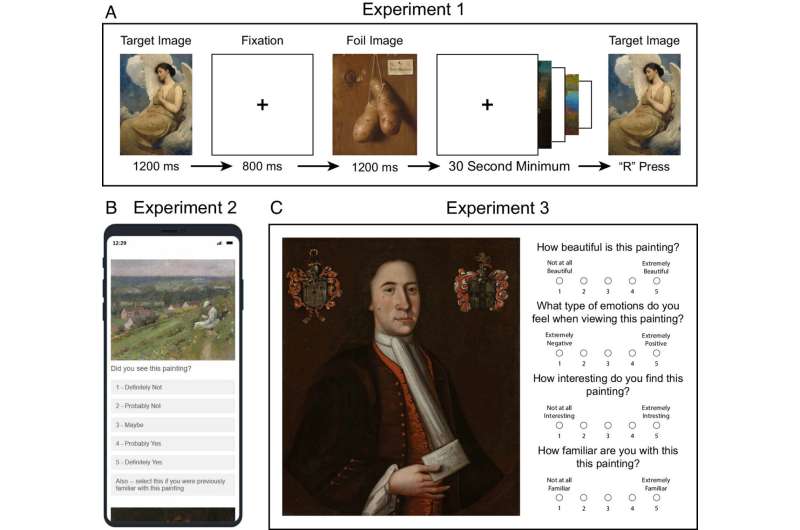July 25, 2023 report
This article has been reviewed according to Science X's editorial process and policies. Editors have highlighted the following attributes while ensuring the content's credibility:
fact-checked
peer-reviewed publication
trusted source
proofread
Experiments show most people find the same pieces of artwork memorable

A pair of psychologists at the University of Chicago has found that when showing multiple paintings to a group of people, most of them will find the same few memorable. In their paper published in Proceedings of the National Academy of Sciences, Trent Davis and Wilma Bainbridge describe three kinds of experiments they conducted to learn more about memorability of art, and what they learned from the results.
Logic suggests that viewing art is a personal experience; most who look at a painting or statue come away with their own thoughts or feelings regarding the piece. This is because people bring their own persona and experiences when interpreting art. But such an experience may not be as individualistic as some might expect. In this new effort, Davis and Bainbridge have found that more often than not, people leaving an art gallery will almost all remember the same paintings.
To learn more about what makes a piece of art memorable, the research pair conducted three kinds of experiments. The first involved asking over 3,000 online volunteers to look at a series of paintings and then afterwards to look at the same paintings mixed in with other paintings while asked which of those they remembered from the first series. In looking at the results, the research pair found that most of the volunteers remembered the same paintings.
In the second experiment, the researchers asked a group of 19 volunteers to wander around an art museum, making sure to look at all the paintings that were there. After the visit, each of the volunteers took a memory test of the paintings they had just viewed. Like the first experiment, the volunteers tended to all remember the same paintings.
In the third experiment, the team took a different approach, they asked online volunteers to rate the beauty, emotional tone and how familiar paintings looked to them and how interesting they seemed. They found that the only factor that played a role in memorability was how interesting the volunteers found the paintings.
As an added twist to their work, the researchers also used a deep-learning AI application called ResMem—it was designed to predict how memorable paintings would be when viewed by people. They found that the app tended to pick the same paintings as the volunteers in all three of their experiments. Because of that, they found that it could predict which paintings the volunteers would best remember.
More information: Trent M. Davis et al, Memory for artwork is predictable, Proceedings of the National Academy of Sciences (2023). DOI: 10.1073/pnas.2302389120
© 2023 Science X Network


















